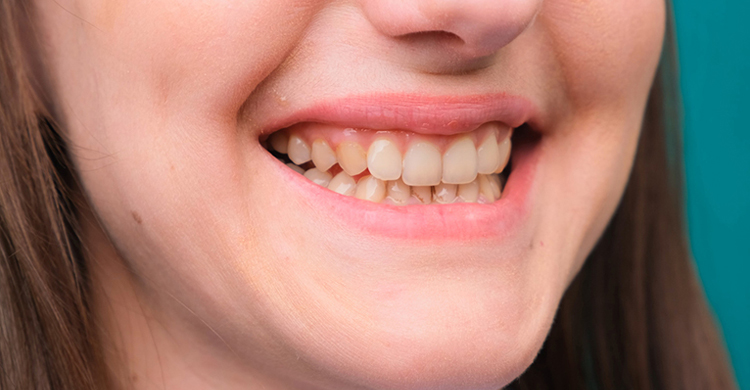
Blog Posts
RECENT BLOG POST


04 Aug 2021


10 Aug 2021


10 Aug 2021


By Dr. Aastha Chandra

24 Apr 2023
REASONS FOR TEETH DISCOLORATION
Teeth discoloration which is incredibly common, might make us feel self-conscious, and it can result from a wide range of issues. Understanding these potential causes is essential for anyone who wants to maintain a pearly white smile, and allows you and your dentist to work together in order to prevent and/ or manage tooth stains.
In that spirit, here are some of the most common causes of teeth discoloration:
1. POOR ORAL HYGIENE
This one probably won’t come as a shock, but failing to brush and floss on a daily basis is one of the major contributors to tooth discoloration. When you don’t brush and/ or floss regularly, this allows bacteria and food particles to stick around in your mouth and cling to your teeth, which can lead to tooth stains. Pair poor dental hygiene habits with any of the other factors on this list, and you’ve just created an oral environment particularly primed for stains.
2. CERTAIN FOODS AND BEVERAGES
They may be delicious, but coffee, tea, wine, soda, and some juices can largely affect the whiteness of your teeth thanks to their high acidity. Even some good-for-you foods can have a staining effect, including apples, beets, blueberries, cherries, citrus fruits, cranberries, potatoes, raspberries, and tomatoes. As a general rule of thumb, any food that could stain your clothes is also liable to stain your teeth – so add brightly colored candies, popsicles, and so on to this list.
3. TOBACCO USE
When it comes to oral health and hygiene, tobacco users can’t catch a break. Not only does chewing or smoking tobacco put you at a higher risk of gum disease and other oral health issues, but it’s also all but guaranteed to advance the yellowing of your teeth.
4. CERTAIN MEDICATIONS
A number of medications can contribute to tooth discoloration, including antihistamines, antidepressants, antipsychotic drugs, and drugs used to manage high blood pressure. Exposure to the antibiotics tetracycline or doxycycline in utero or before the age of eight can have a similar effect. The same goes for certain medical treatments such as chemotherapy or head and neck radiation. Even some oral rinses can cause tooth stains.
5. CERTAIN ILLNESSES
Some medical conditions may impact the tooth enamel, which can lead to changes in the color of your teeth. These conditions include metabolic diseases, calcium deficiency, vitamin B12 deficiency, liver disease, rickets, eating disorders, and celiac disease.
6. TRAUMA
Falling and chipping or otherwise damaging a tooth can harm the tooth’s enamel, which can lead to discoloration of the tooth. This is most common in children but can affect people of all ages.
7. GENETICS
When it comes to maintaining a bright smile, some people are just born lucky – and others, not so much. Genetics play a role in the brightness and thickness of your enamel, which can have a big impact on the apparent color of your teeth.
8. DENTAL MATERIALS
Some of the materials used in dentistry, such as amalgam restorations especially silver sulfide-containing materials, can cast a gray-black color to teeth.
9. AGING
As you age, the outer layer of enamel on your teeth wears away, revealing the natural color of dentin.
10. ENVIRONMENT
Excessive fluoride either from environmental sources (naturally high fluoride levels in water) or from excessive use can cause teeth discoloration.
CONCLUSION
Now that you understand the potential causes of tooth discoloration, it’s time to work with your dentist to come up with a plan for keeping your smile bright. A proper oral health care routine – including daily brushing and flossing and regular dental checkups will help, as will cutting back on acidic beverages and quitting smoking. Beyond these basic strategies, solutions for tooth discoloration are determined on a case-by-case basis, so don’t be shy about soliciting your dentist’s insights for maintaining your pearly whites.

